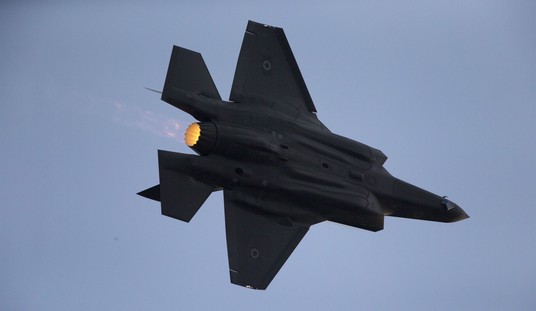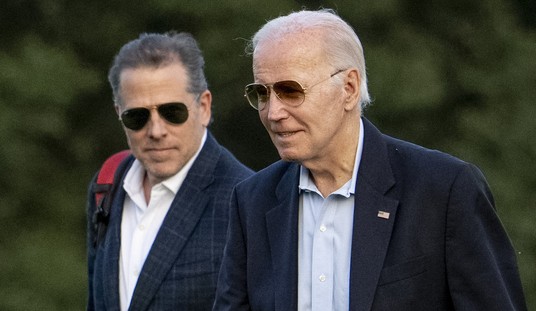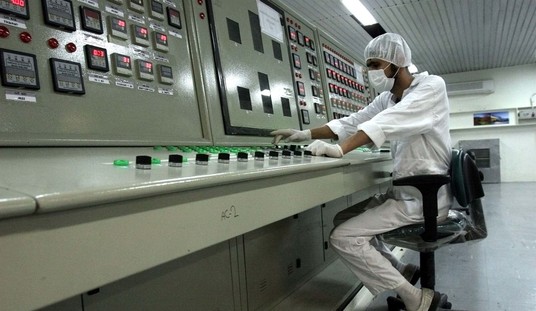Today marks the 110th anniversary of Walt Disney’s birth. Disney started with little more than talent and ambition and built one of the most powerful entertainment empires known to man. Many people think of him as simply the man who created Mickey Mouse, or as a television host or studio head, but Disney played a vital, hands-on role in his company’s success.
Disney won 22 Academy Awards, an Emmy, and countless other honors for his work. He was also a visionary like few others in history, and he belongs on the list of true American innovators along with Thomas Edison, Henry Ford, and Steve Jobs.
In honor of Disney’s birthday, here is a list of five of his greatest innovations. Some of them are obvious, while others aren’t as well known. But all changed the way we view entertainment and art.
(Author’s note: I relied on two books about Walt Disney for this column. Bob Thomas’ Walt Disney: An American Original is more or less his “official” biography, while Neal Gabler’s Walt Disney: The Triumph Of The American Imagination is a recently published account. Both books are comprehensive and well-written, and I highly recommend them.)
5. Animation
Walt Disney revolutionized animation. Before Disney, cartoons were crudely drawn and poorly animated with weak stories consisting of little more than quick gags. They were cheap and profitable, but Disney took them to the next level.
The earliest animation was the cartoon short, and Disney worked hard to raise the bar. One of the first Mickey Mouse shorts, Steamboat Willie (1928), was the first to synchronize music to animation. It was so successful that the two previous silent Mickey Mouse shorts were rereleased with new soundtracks. Disney went further with music in his cartoons with The Three Little Pigs (1933) by adding a theme song, “Who’s Afraid Of The Big Bad Wolf,” which quickly became a best selling tune.
Disney took short animation to the next level in other ways with his Silly Symphonies series. Flowers And Trees (1932) was the first cartoon in Technicolor, and it won the first Academy Award for animation. Five years later, The Old Mill was the first short to use the multiplane camera, a Disney Studios invention which added an element of dimension to cartoons. The Old Mill also won an Oscar.
After his successes with shorts, Disney decided to expand his animation art to feature length cartoons. Many in Hollywood doubted if strong storylines and more realistic characters would work in animation, and Snow White and the Seven Dwarfs (1937) was called “Disney’s Folly” until it garnered critical praise and turned a handsome profit.
Some animated films like Dumbo (1941) and Cinderella (1950) were critical and financial successes, while others like Fantasia (1940) and Sleeping Beauty (1959) were less profitable in spite of favorable reviews. During this period the studio also discovered that they could re-release the animated features every seven years, generating 100% profit and making successes out of even the least profitable works.
Just after World War II, when the studio began to branch out into live action films, Disney had the idea to blend live action and animated sequences for Song of the South (1946). It worked so well that the studio tried the technique again with Mary Poppins (1964) and in pictures after Walt Disney’s death like Tron (1982) — which combined live actors with early computer animation — and Who Framed Roger Rabbit? (1988).
It’s not hard to imagine that, without Disney’s contributions to the medium, we wouldn’t have the rich landscape of animation that we have today, from the studio’s inimitable princess films to the increasing creativity of Pixar.
4. Higher Education
One of Disney’s lesser known innovations — unless, perhaps, you live in California — was his contribution to higher education. Disney was the visionary behind the development of the California Institute of the Arts (CalArts).
Disney had a long history of commitment to artists’ training. From the early days of the Disney Studios, he teamed up with the Chouinard Art Institute to hold regular classes taught by masters of various media. Zookeepers often brought live animals in for the animators to learn how to replicate natural movement.
At the same time that the Disney Studio was experiencing unprecedented success in the early ’60s, Chouinard had fallen on hard times. Disney developed a vision for a school that would provide comprehensive arts training. “A school should offer a kind of cross-pollenization that would develop the best in its students,” he said, and he came up with the idea of combining Chouinard with the Los Angeles Conservatory of Music, another school that was in danger of folding.
After months of research and consultation, Disney felt he had a concept for what would become CalArts. He presented this plan to the public for the first time in a short film (below) that accompanied the Hollywood premiere of Mary Poppins in 1964.
Though Walt Disney would not live to see CalArts’ opening, the school maintained his vision of an interdisciplinary arts education. CalArts opened its doors in 1970 at a temporary location before moving the following year to a permanent campus in Valencia, CA, on land donated by the studio. To this day, CalArts is one of America’s preeminent educational institutions.
3. Merchandising
Disney was a trailblazer in merchandising. He understood early on that the right merchandise could become an effective tool to promote Disney movies and TV shows. He also knew that products — and even music — could turn into profits.
As soon as Mickey Mouse became popular Disney manufacturers inundated him with ideas to cash in on the phenomenon. Disney only wanted the best products to bear Mickey’s name and image, so he ignored many requests. The studio negotiated a 2.5-5 percent royalty on all items, and at the depth of the Great Depression consumers bought hundreds of thousands of items from toys to ice cream cones to the famous Mickey Mouse watches. In fact, the sale of windup Mickey Mouse handcars was credited with bringing Lionel Trains back from bankruptcy.
Around the same time, Disney’s hit song “Who’s Afraid of the Big Bad Wolf?” from The Three Little Pigs resonated with Depression-era audiences and became an anthem for the times. Conductors and bandleaders pressed the studio for sheet music, and multiple artists recorded the song.
In the early 50s, as the studio was beginning to get its feet wet in television, the Disneyland program aired Davy Crockett. Audiences made the series a surprise hit and Disney looked for ways to market the new success. A trade embargo with China led to surpluses of raccoon skins and inspired the studio to negotiate a deal for coonskin hats like the one worn by Crockett on the show. Demand far exceeded expectations and they sold by the millions.
Composer George Bruns put together a song titled “The Ballad of Davy Crockett” for the show. The producers considered the track filler but it too quickly became a hit, selling ten million copies and spending a month at #1 on the Billboard charts while three other versions made the Top Ten, including one recorded by the show’s star, Fess Parker.
Even though we take merchandising for granted these days, in Disney’s time these fresh innovations helped change American entertainment.
2. Television
Long before a television sat in every living room, Disney understood the power of the new medium. As far back as the late 1930s he refused to sell the rights to his films, though he didn’t realize yet how popular television would become.
Years later, he said:
…everybody wanted to buy all our old product. We wouldn’t sell it. We wouldn’t hear of it. We wanted to handle it ourselves, make good use of it.
When it came to television, the one thing I wanted was to control my product. I didn’t want anybody else to have it. I wanted to control the format and what I did with it.
In 1950, NBC approached the studio with an idea for a Christmas special. Disney saw the value of promoting upcoming films on television and consented. Audiences loved the show so much that he produced another one the following year.
During the early stages of planning Disneyland, Disney and his brother Roy knew they had to raise funds for the project creatively, so Roy traveled to New York to meet with network executives to discuss TV’s ability to finance and promote the park. ABC agreed to a weekly Disney series in exchange for a stake in Disneyland.
The Disneyland series debuted in October 1954 and was an unqualified smash. The studio used the series to hype the theme park and promote Disney films.
Disney presciently insisted on filming as many segments as possible in color — even though most televisions still used black and white — because he believed color would become the standard. A few years later, he moved his show to NBC, where the entire program was broadcast in color and retitled Walt Disney’s Wonderful World of Color.
With this new success the studio committed to quality television for the whole family. The Mickey Mouse Club, the forebear to the juggernaut that is the Disney Channel today, arrived next followed with more shows to come in the decades that followed.
Disney clearly saw the value of the infant medium of television. He was aware of the power of promotion through TV and he used it to connect with the public in an entirely new way.
1. Theme Parks
Disney’s greatest and most tangible influence is in the realm of the theme park. From the opening of Disneyland in 1955, Disney theme parks led the industry as the gold standard of excellence in amusement park entertainment. And it all started with Disney’s regular family outings.
Before Disneyland, most Americans regarded amusement parks as tawdry and unclean. Shoddy rides and less-than-friendly personnel easily spoiled fun family days. Most parks aimed only at children, leaving little for adults to do. Disney would take his daughters to a Los Angeles park most weekends, and his vision for Disneyland was born on one of these daddy-daughter days.
Disney wondered why amusement parks didn’t cater to the whole family and why they weren’t cleaner and more inviting. He spent months researching successful parks across the country and figuring out ways to combine and “plus” the best ideas. He wanted his parks to be completely immersive experiences where guests could leave the world behind.
After years of planning and preparation, Disneyland opened in July 1955. A success from the start, Disney began to think of ways he could improve on the experience. The urban blight which quickly surrounded Disneyland made the entrepreneur wish he had bought a larger tract of land for a new resort where he could control the surrounding area.
After seeing how East Coast audiences responded to his attractions at the 1964-65 New York World’s Fair, Disney began to explore the idea of a larger park somewhere east of California. The company bought 27,000 acres in Central Florida to create a complete vacation destination. Disney even initially included plans for a futuristic city in his Florida Project.
Though he did not live to see the completion of Walt Disney World, the legacy of its namesake lives on in exquisitely detailed parks and resorts, cutting-edge technology behind the scenes, and even a planned community just outside the park’s gates. Walt Disney World exceeded the expectations of anyone who heard the original grand vision for the resort.
The success of Disneyland and Disney World led to Disney parks in Tokyo, Paris, and Hong Kong, as well as a future resort planned for Shanghai. Additionally, Disney operates a cruise line, a timeshare program, a Hawaiian resort, and a line of boutique international adventures. Of course, that success spawned plenty of imitators over the years. The truth is, none of these vacation destinations would have been possible without the creative vision of Walt Disney.
Disney filled many roles in his 65 years: artist, husband and father, philanthropist, anti-Communist, filmmaker, and even the original voice of Mickey Mouse. But his greatest role was as an American innovator. From animation to television to theme parks Disney left his mark on our culture and enhanced our lives.









Join the conversation as a VIP Member